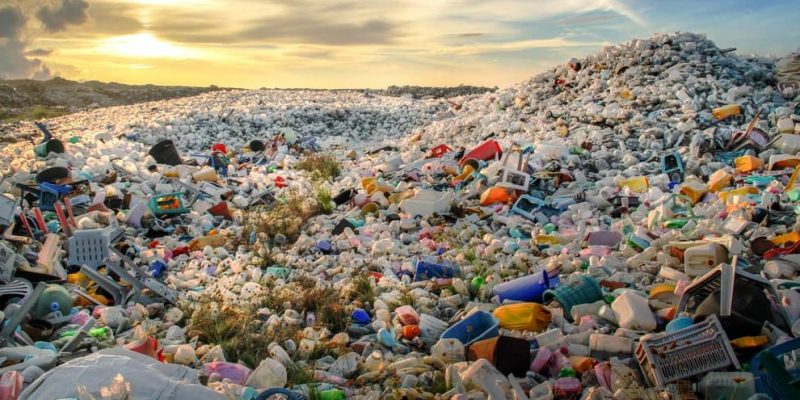We explain what environmental impact is, what types exist, their causes and examples. Also, its measurement and how it can be mitigated.

What is environmental impact?
The environmental impact, anthropic impact or anthropogenic impact covers the different effects that human activity and the human model of life unleash on the environment natural.
These alterations are so significant and have such a lasting effect on the world's ecosystems that many scholars suggest the use of the term anthropocene (that is, linked to the human being) for the current geological period, whose characteristics could not be understood without the environmental impact of our industries.
Environmental impact can have many forms and also different effects on the environment. In general terms, it can be defined as the transformation of the terrestrial, maritime and even atmospheric environment as a consequence of different human activities.
Its forms can range from deforestation and soil destruction due to mining, to maritime oil spills and chemical pollution of the atmosphere.
The big problem with this phenomenon is the cost it has for other forms of life, since By destroying their natural habitats, many species perish and become extinct. This impoverishes planetary biodiversity, which is one of its great and unmatched treasures.
Besides, The future consequences for the sustainability of life as we know it in the world are unpredictable. Therefore, the actions taken today could be much more costly for the entire species than we even suspect today.
See also: Environmental problems
Types of environmental impact
The environmental impact can be classified according to different criteria, taking into account the changes made to the environment. Thus, it is possible to talk about:
- Negative impact. When it causes damage to the environment or impoverishes its quality.
- Positive impact. When it helps reduce the impact of other initiatives, or allows the environment to remain practically unchanged.
- Direct impact. When environmental deterioration is the work of human actions.
- Indirect impact. When environmental deterioration is not a direct consequence of human actions, but of the products or waste that it generates, and that unleash a series of unpredictable reactions in the ecosystem.
- Reversible impact. When it is possible to take actions to counteract the change produced in the environment.
- Irreversible impact. When there is no way to undo the damage done to the ecosystem.
- Continuous impact. When it takes place constantly, without stopping.
- Periodic impact When it occurs only in certain periods of time.
- Cumulative impact. When it is the result of past and present actions, whose effects accumulate or add up over time.
- Residual impact. When its effects persist over time or persist after measures have been taken to mitigate it.
Causes of environmental impact

It is inevitable that humanity's way of life has some type of environmental impact. As a species we learned thousands of years ago that we could make our lives more comfortable, longer and fuller by adapting the environment to our needs and transforming different materials, instead of adapting ourselves through the very slow evolutionary process, like the rest of the species.
However, Not all human activities have the same environmental impact. Many of them are almost harmless, or have such a moderate impact that nature can counteract it in a short period of time. But there are others that greatly impact the ecosystem, permanently or almost permanently, without giving nature time to correct the damage done.
The economic and production model that has prevailed in the world since the Industrial Revolution is based on the mass obtaining of raw materials and their transformation through different processes. Many of them generate dangerous waste, or underproduce elements that, since they have no use for civilization, are returned to nature in proportions that are impossible to assimilate quickly.
In this way, the causes of the environmental impact can be summarized as:
- Unbridled economic and industrial activity of the human being, which had its beginnings around the 18th century and has only grown without stopping.
- The lack of regulation in environmental matters during much of the emergence of industrial society, as well as global economic inequalities that prevent nations from dedicating the same budget to safeguarding the environment.
- The construction of a society model based on rapid consumption of materials, which generates large amounts of waste, and requires enormous efforts in recycling that not all of us seem willing to make.
Examples of environmental impact
The following cases constitute examples of environmental impact.
- Deforestation To provide inputs and raw materials to the wood and paper industries, which are used to manufacture furniture, construction materials, pencils and other products, trees whose growth and maturation required at least dozens of years are cut down. This leaves numerous animal species homeless and without sustenance, and deprives the soil of the protection of a plant layer that absorbs water. In addition, it impoverishes the atmosphere by removing from circulation trees that fix environmental carbon in their bodies (by absorbing CO2). Fortunately, this phenomenon can be combated through reforestation plans, but usually the rate of felling is greater than that of planting.
- Radioactive materials Nuclear energy is an important source of electricity used by many countries in the world, with France and Japan being its largest investors. This energy does not pollute in the same way that fossil fuels do, but it does produce barrels of plutonium and other radioactive chemical isotopes, which emit toxic particles over hundreds or even thousands of years. Disposing of such waste is difficult, and wherever radioactive waste deposits are disposed, surrounding life will always be affected and harmed.
- Air pollution Perhaps one of the most dramatic cases of environmental impact is that of the atmosphere, into which we dump several tons of polluting gases daily, a product of industry, livestock farming and the burning of fossil fuels. Many of these gases, rich in carbon, such as methane or carbon dioxide, remain in the atmosphere and prevent the irradiation of heat, contributing to climate change; Other gases, rich in sulfur, react with water and produce acid rain. Those are just a couple of examples of its effects on the entire world.
Environmental impact assessment
To measure the environmental impact of different human activities, a technical-administrative procedure known as Environmental Impact Assessment (EIA) is used. It is carried out when the activity is still a project, in order to decide whether to carry it forward or if it requires reformulation, based on the ecological cost that its implementation will entail.
In many legislations around the world, EIA has become indispensable. It may be one of the elements required when granting resources or tenders since the responsibility for environmental protection generally falls on the State.
The EIA is prepared by specific and determined project. It takes into account factors such as the type of work, the elements to be used, the procedures, the technologies involved, the energy demands, etc.
Measures to mitigate environmental impact
According to the environmental activist organization Greenpeace, the main considerations to take into account to reduce the environmental impact of our activities are:
- Save energy That is, using the essential amount of electrical or caloric energy, not wasting it through lights on unnecessarily, heaters on unnecessarily, or excessively cold air conditioners, to name a few examples.
- Favor green energies Around 30% of the world's energy generation comes from more environmentally friendly sources than traditional energy sources. This figure needs to grow.
- Sustainable construction Urban expansion must occur in terms that are as harmonious as possible with the surrounding nature and using materials responsibly.
- Use less water Global water consumption is increasing, which means that we contaminate more and more volumes of water. We must avoid the waste of white water and treat wastewater for maximum use.
- Consume responsibly. This means distancing oneself from the consumerist culture that buys and discards non-stop, generating much more waste than the essential minimum. We must manage ourselves with more sensible criteria.
- Recycle trash Garbage separation and recycling policies are vital to reduce the amount of waste and to save on the extraction of new raw materials. There must be serious and accessible policies for recycling in all cities, and projects must prioritize materials that are recyclable or from recycled sources.
- Composting Decomposing organic matter can be reintroduced into the soil and provide it with nutrients that would otherwise have to be extracted from artificial fertilizers. Eco-sustainable measures like this must be popularized.
Continue with: Environmental conservation
References
- “Environmental impact” on Wikipedia.
- “Environmental impact assessment” on Wikipedia.
- “Environmental impact. What is negative and positive environmental impact?” (video) in Green Ecology.
- “Environmental impact and types of environmental impact” in the Government of Mexico.
- “Greenpeace proposes 10 measures to reduce the impact of cities on the environment” in Greenpeace Spain.
- “Human Impacts on the Environment” in National Geographic.





